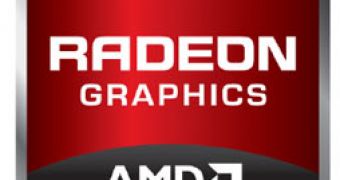With AMD working on releasing the Radeon HD 7000-series of GPUs into the wild at the beginning of the next year, all sort of reports about these upcoming graphics cards have started to reach the Web and the latest such rumors have come to detail the preliminary prices of these GPUs.
As many of you probably know, AMD’s desktop Radeon HD 7000-series will comprise graphics cores based both on the Next-Generation Core (NGC) architecture as well as on the current VLIW4 design.
The NCG graphics cards will cover the high-end segment and AMD plans to release two such GPUs, dubbed Tahiti XT and Tahiti Pro, which will be used in the HD 7970 and HD 7950, respectively.
According to Donanim Haber’s sources, AMD plans to retail the first of these graphics cards for $499 (371.9 EUR), while the latter will retail for $399 (297 EUR).
We talked about the rest of the HD 7900 series specs in a previous article (available here), so we are not going to get into details here, but the cards will feature 3GB of VRAM, a 384-bit wide memory bus as well as support for DirectX 11.1.
Right under the Tahiti core, comes AMD’s Pitcairn GPU which will be used for the HD 7870 and HD 7850, Donanim Haber reporting that these will be priced at $299 and $199 (222.8 and 148 EUR), respectively.
The $100 difference between the two seems a bit high to us and also contradicts a previous report from BSN, which places the two Pitcairn GPUs in the $199-$249 price bracket.
If we were to choose between the two sources, we would definitely go with BSN on this, but we can’t say for sure who is right until AMD launches the Radeon HD 7870 and HD 7850.
Finally, the last two graphics cards to be priced are the HD 7650 and HD 7670, the former being estimated to arrive at $119 (88.6 EUR), while the latter will cost $179 (133.4 EUR).
As far as the launch of the Radeon HD 7000 series is concerned, AMD is expected to unveil the two high-end Tahiti graphics cores during CES 2012, while the rest of the company’s desktop next-gen GPUs will arrive in the months after the fair.

 14 DAY TRIAL //
14 DAY TRIAL //